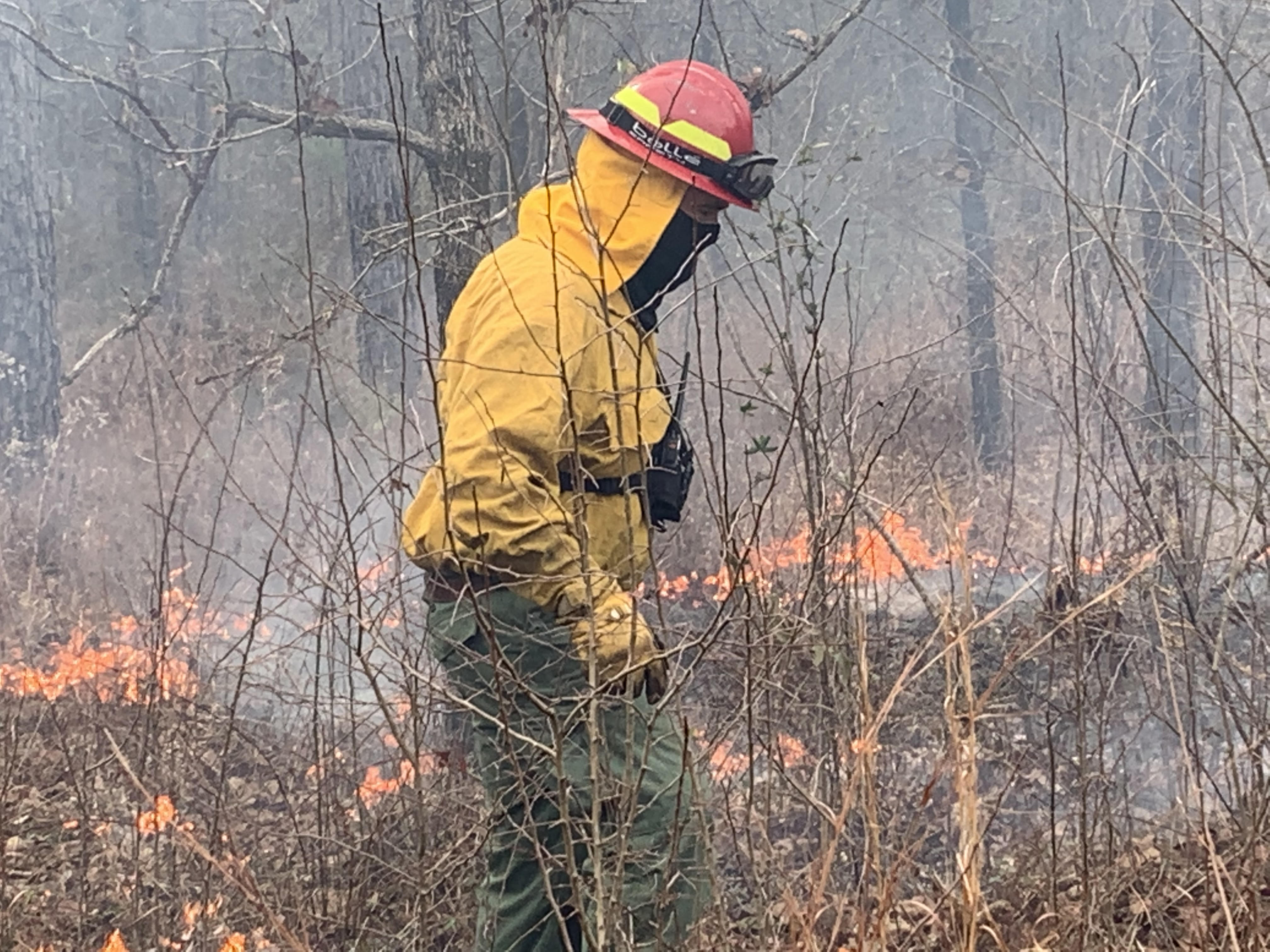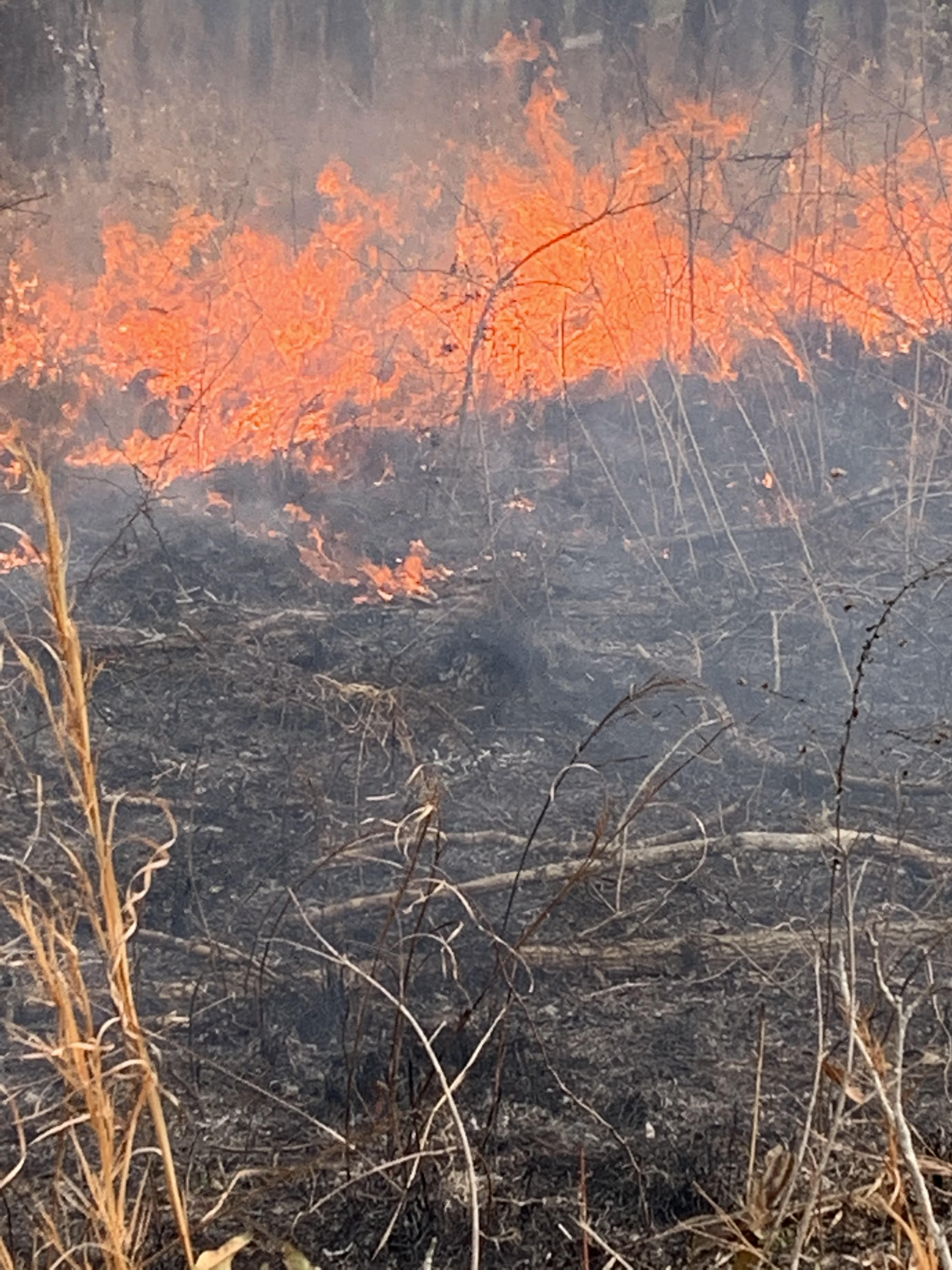

Smoke billowing from a forested area could certainly be cause for concern in some instances. It signals a fire and the average person probably thinks that a bad thing but that’s not necessarily so.
The Louisiana Department of Wildlife and Fisheries (LDWF) uses prescribed burns on many of its properties in order to enhance the health and quality of the woodlands habitat.
That was the case in February when LDWF staff did a prescribed burn on a 22-acre tract at Sandy Hollow Wildlife Management Area (WMA) in Tangipahoa Parish. The WMA is managed as an upland longleaf forest, with a special emphasis on bobwhite quail, a bird that forages and nests primarily on the ground.
By using prescribed burns among the longleaf pine stands in the WMA, LDWF is able to promote the growth of desired herbaceous and grassy cover, providing food and shelter for the quail as well as controlling the less desirable woody shrubs and hardwood trees that can quickly dominate these forested areas.
“I know growing up I used to think fire was bad for the forest,’’ said LDWF biologist manager Jillian Day, who oversees Sandy Hollow WMA. “Now, as a professional, I’ve become more knowledgeable about how fire can be beneficial. For us, fire is one of the best and most cost efficient tools we have when it comes to habitat management. From my perspective, controlled fire is a good thing.’’
Longleaf pine forests are fire dependent systems, and if left unchecked, can eventually develop into a mixed pine-hardwood forest. Fire is a process that sets back forest succession to promote a more diverse herbaceous ground cover. It does so by impeding the growth of invading hardwood trees that are not adapted to fire and encouraging growth and development of the woody and herbaceous vegetation that are fire-adapted, such as pines, grasses and many native wildflowers.
Prescribed burning is one of the best tools for improving wildlife habitat conditions for many species in grasslands and longleaf pine-dominated forests. Shrubs and herbaceous plants experience a flush of new growth following a fire. This new growth is more nutritious and palatable to grazing and browsing wildlife than the rough vegetation that occurred before the burn. This also allows land managers to keep areas in early successional habitat, which is beneficial for most wildlife, especially the bobwhite quail.
Many of the beneficial insects consumed by birds are more abundant following a fire. Properly applied fire promotes flowers, seeds and fruit production, increasing available food resources for wildlife.
“Sandy Hollow is rather unique in this region,’’ Day said. “We manage specifically for bobwhite quail. Prescribed fire in that ecosystem is going to promote the habitat that this species requires. Sandy Hollow WMA was acquired by the LDWF to serve as a focal area for quail management, so habitat management that we do on this WMA is going to benefit that species. But, it also benefits other species like the gopher tortoise, which is currently listed as a threatened species by the US Fish and Wildlife Service.’’
There is more that goes into a prescribed burn than just showing up one day and lighting a fire. LDWF personnel conducting prescribed burns have extensive certification and years of experience. Each burn must be planned out in advance and all conditions must be ideal for it to take place.
“The winds play a major factor in whether a fire will move across the landscape in the prescribed manner and is extremely important for smoke management,’’ Day said. “With as many roads and surrounding infrastructure around the WMA, we have to be conscious of where the smoke goes, so smoke management is a big part of prescribed burning. We don’t want to put smoke on schools, people’s houses or on people with sensitive health issues. We are very cautious about burn days and which way the wind is carrying the smoke.”
“The next step is to ensure that the wind is going to allow a burn in the right direction as far as properties next to the WMA are concerned. We don’t want to have the fire jump (a road or fire line), so our wind direction needs to be in the prescribed direction.’’
The prescribed burns at Sandy Hollow are generally small. The units are usually 75 acres or smaller. The smaller units, along with the strategy employed, allows the burn to work slowly. That helps in getting rid of unwanted hardwoods and other undesirable plants.
“The name ‘prescribed burn’ actually lends itself to what we’re trying to accomplish,’’ Day said. “It’s not an out-of-control burn. Our goal for most of our burn units is to do a slow backing fire. You want to get ahead of the wind and let that fire back slowly through the unit.”
“You accomplish better habitat management when it comes to controlling those woody species. Those species are not as well evolved to endure fire. That slow backing burn is going to give us a better desired outcome.’’
For more information on Sandy Hollow WMA, go to https://www.wlf.louisiana.gov/page/sandy-hollow.
For photos, interviews and video from the prescribed burn, go to https://ldwf.canto.com/v/SandyHollowRxBurn/allfiles?viewIndex=0.
